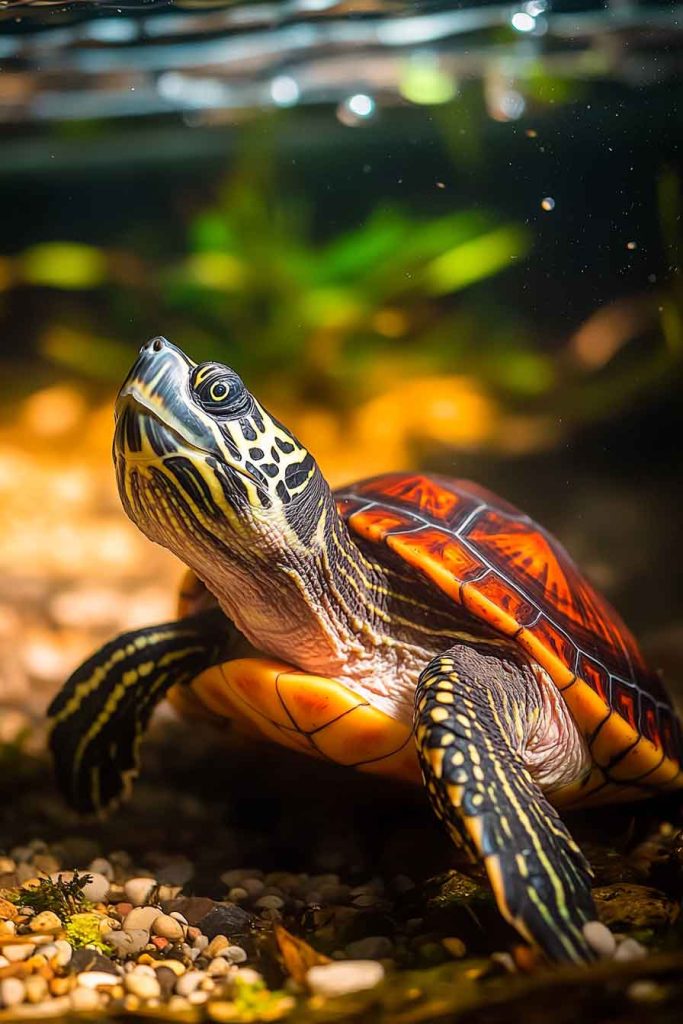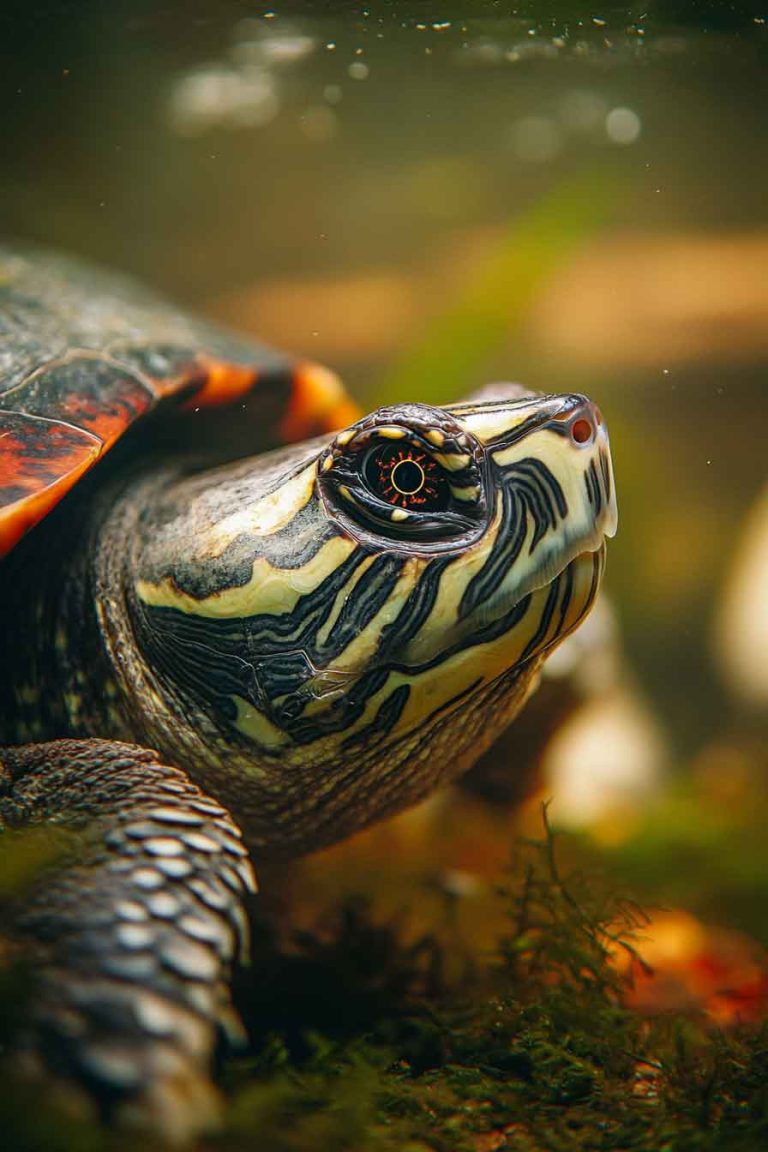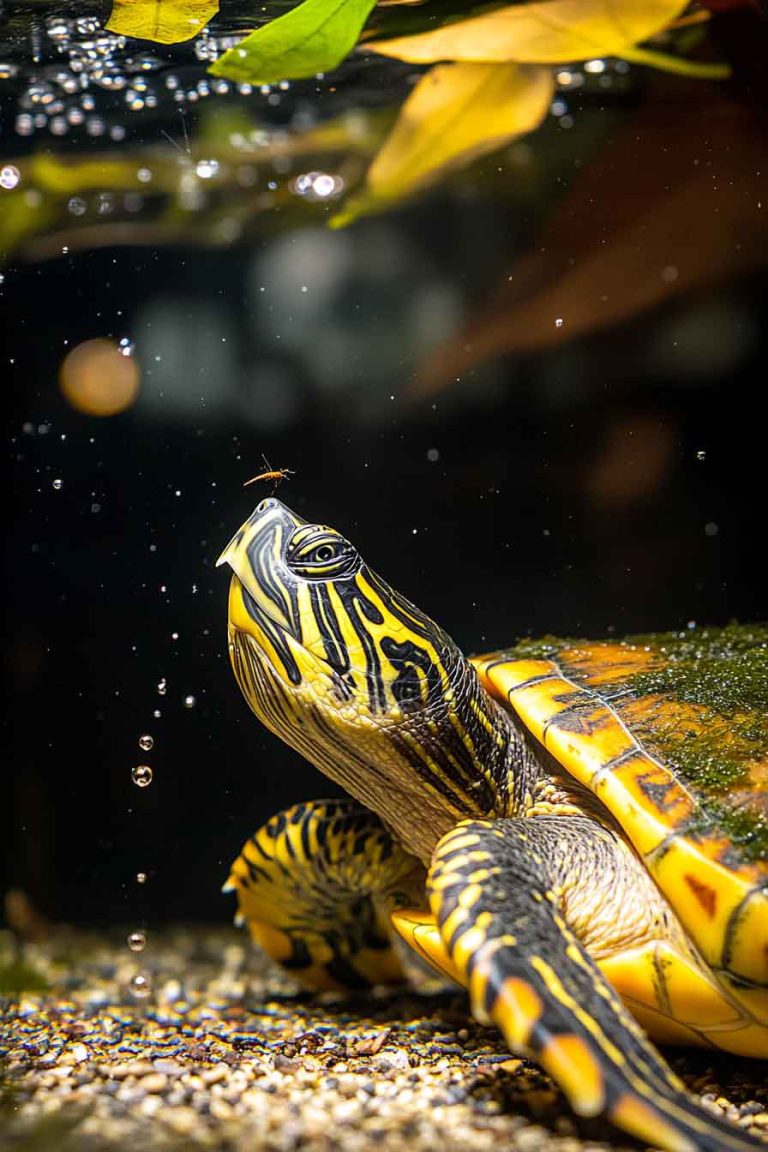Worms in Turtle Tank? Causes, Risks & Deworming Guide
Ever leaned in to admire your turtle and suddenly noticed thin, wiggling threads floating in the water or wriggling in the substrate? Yeah… I’ve been there. The first time I saw worms in my turtle’s tank, I had a ton of questions racing through my head. Are these dangerous? Is my turtle infected? Do I…
Ever leaned in to admire your turtle and suddenly noticed thin, wiggling threads floating in the water or wriggling in the substrate? Yeah… I’ve been there. The first time I saw worms in my turtle’s tank, I had a ton of questions racing through my head. Are these dangerous? Is my turtle infected? Do I need to panic?
If you’re seeing worms, don’t stress—yet. Worms in a turtle tank are more common than most people think, and in many cases, it’s not as serious as it seems. But sometimes, yes, it can point to a bigger issue, including a parasitic infection that needs urgent attention.
In this post, I’m going to walk you through what these worms are, how to tell whether they’re harmless or harmful, and most importantly, how to clean your tank, protect your turtle, and prevent worms from coming back.
Do Worms Really Show Up in Turtle Tanks?
Yes, they do—and surprisingly often. Over the years, I’ve dealt with all sorts of odd tank invaders, but tiny worms are one of the most unsettling at first. The good news? Most of them aren’t directly dangerous. The bad news? They’re almost always a sign of poor tank hygiene, overfeeding, or stagnant waste buildup.

There are typically three possibilities:
- Free-living worms (like detritus worms or planaria) that live in dirty tanks.
- Parasitic worms that may have come from feeder fish, contaminated water, or an already infected turtle.
- Hitchhikers—worms or larvae introduced through live plants, snails, or new substrates.
The first time I saw worms in my tank, they were stuck to the glass and swimming through the water like little hairs. I thought my turtle had parasites, but it turned out to be detritus worms, and thankfully, those don’t infect turtles. Still, I had to take action fast.
Types of Worms You Might Find in a Turtle Tank
Not all worms are the same. And figuring out what kind of worms you’re dealing with is the first step to knowing how to respond. Here’s a breakdown of the main types I’ve encountered (or researched heavily through vet consultations and turtle forums).
1. Detritus Worms (Tiny White String-Like Worms)
These are the most common. They look like hair-thin white threads that twitch and wriggle in the water or substrate—sometimes even floating mid-water when disturbed.
- Are they harmful? No, not directly. They don’t infect turtles.
- Why are they there? They feed on uneaten food, turtle poop, algae, and biofilm. Their presence usually means your tank is overloaded with organic waste.
- When I saw them: They exploded in my tank after I skipped water changes for a week and left food in the water too long.
How I handled it: Deep-cleaned the substrate, vacuumed daily for a week, reduced feeding portions, and upgraded my filter. Gone within days.

2. Planaria (Flatworms Sticking to the Glass)
These are small flatworms, often white or light brown, with a triangular head and slow, slithering movement. You’ll usually find them on tank walls, décor, or crawling across the substrate.
- Are they harmful? Not to turtles—but they’re a sign your tank is out of balance.
- Where do they come from? Planaria thrive in tanks with too much protein waste—like leftover meat-based foods or dead feeder fish.
When I had them: I noticed planaria after I tried feeding my turtle raw shrimp and left bits in the tank for too long. Within days, they were everywhere—climbing the glass and hiding in the filter sponge.
3. Parasitic Worms (Roundworms, Nematodes, Tapeworms)
Now here’s where things get serious. These are internal worms that can infect your turtle, and they often go unnoticed—until you see symptoms or spot actual worms in the poop or floating in the tank.
- Signs your turtle may be infected:
- Sudden weight loss
- Poor appetite
- White stringy poop or worms in feces
- Lethargy
- Visible worms in the water that resemble spaghetti strands or thread-like creatures
- Where do they come from? Contaminated feeder fish, wild-caught insects, or from another infected turtle
My experience: I adopted a rescue turtle that looked thin and sluggish. After a few days, I spotted thin, whitish worms in the water and called a reptile vet immediately. Turned out to be roundworms—and we had to go through a full deworming process.
How to Tell If Your Turtle Is Infected by Worms
Seeing worms in your turtle tank is one thing—but figuring out whether your turtle itself is infected is another. Not every case of tank worms means your turtle has parasites. In fact, many times, those worms are just feeding off waste in the water, not your turtle.
But here’s how I learned to spot the difference between a dirty tank and a possible internal parasite problem.
Signs That Your Turtle Might Be Infected
If your turtle has internal parasites (like nematodes, roundworms, or protozoa), they’ll usually show at least one or more of these symptoms:
- Lack of appetite – This is often the first sign. A turtle that stops eating for more than a few days—without changes in temperature or lighting—might be unwell.
- Weight loss or sunken limbs – If your turtle is eating less and looks thinner or less “filled out” around the legs and neck.
- Worms in the feces or floating in the water – I once saw small, white string-like worms coming out of my turtle’s poop. That was my red flag.
- Lethargy or weakness – Just lying around on the basking dock all day, barely moving.
- White, stringy poop – This is not always a worm, but it’s often linked to digestive issues or parasite presence.
Real talk: When I saw both white stringy poop and worms in the water after feeding live guppies, I knew I had to act fast. Turns out, one bad feeder fish can introduce a whole parasite load.
When to See a Reptile Vet
Here’s my honest advice: if you see actual worms in your turtle’s poop or tank water and notice behavioral changes, skip the guesswork and go straight to a reptile-experienced vet.
The vet will likely:
- Run a fecal test to check for worm eggs or protozoa
- Prescribe deworming medication (usually Panacur/fenbendazole or Metronidazole for protozoa)
- Advise on tank cleaning to prevent reinfection
I made the mistake of waiting too long once, thinking a home remedy would work. The infection got worse and my turtle lost a ton of weight. After a single dose of prescribed meds and a proper cleanup, the recovery was fast—but I won’t take that risk again.

Can I Deworm My Turtle at Home?
Technically, yes—but I personally don’t recommend trying to deworm your turtle without proper diagnosis. There are meds like Panacur (fenbendazole) and Flagyl (metronidazole) commonly used for reptiles, but dosing is specific, and overdosing can be dangerous.
If you do work with a vet and they guide you through at-home deworming, here’s what I’ve done during the process:
My At-Home Deworming Routine (Under Vet Supervision)
- Gave prescribed meds orally or mixed with food (crushed pill in tuna water worked like magic)
- Quarantined the infected turtle in a separate container to prevent spreading eggs in the main tank
- Did daily water changes and scrubbed the tank, basking platform, filter parts, and substrate
- Repeated the dose as instructed (usually after 10–14 days for a full cycle)
- Monitored poop and appetite closely for signs of improvement
After two rounds of treatment, my turtle started eating again and regained energy within a week. I just had to stay consistent and clean like crazy during the recovery period.
How to Clean and Reset a Worm-Infested Turtle Tank
Once you’ve identified worms—whether environmental or parasitic—the next step is to clean your turtle’s tank like a pro. Trust me, it’s not enough to do a quick rinse. You want to make sure every trace of eggs, waste, and bacteria is eliminated, or the worms will come right back.
Here’s how I deep-cleaned my tank when I dealt with a worm outbreak:
My Full Tank Cleaning Process
- Remove the turtle first
I place my turtle in a temporary clean plastic tub with dechlorinated warm water. I don’t add food during the cleaning process to reduce extra mess. - Remove everything from the tank
I take out all decorations, basking platforms, filters, and plants. Everything gets scrubbed separately. - Scrub the tank walls and bottom thoroughly
I use a vinegar and warm water mix (1:1 ratio) and a tank-safe sponge to remove grime and biofilm. For parasite situations, I sometimes use a 10% bleach solution (1 part bleach to 9 parts water), but I always rinse everything at least 3–5 times with hot water and let it air dry fully before putting it back. - Boil or disinfect décor
I boil rocks and wood for 20–30 minutes (or soak in hot water + vinegar), especially if I’ve seen worms crawling on them. - Replace substrate or rinse thoroughly
If I use gravel, I boil it or replace it entirely. Worms and parasite eggs love hiding in the substrate, so this part is crucial. - Clean the filter separately
I rinse filter sponges and replace carbon/media if necessary. A clogged or dirty filter is often ground zero for worm explosions. - Refill the tank with fresh, dechlorinated water
Once everything is clean and dry, I fill the tank, reinstall equipment, and let the water run for a few hours before reintroducing the turtle.
It takes about 2–3 hours, but honestly? It’s worth every minute. Once I cleaned my tank like this, I saw zero worms return—and my turtle’s behavior instantly improved.
How to Prevent Worms in the Turtle Tank (What I Do Now)
After going through this the hard way, I’ve got a regular routine that helps me keep the tank clean and worm-free. Here’s my ongoing prevention checklist:
My Weekly Tank Maintenance Routine
- Partial water changes (25–30%) twice a week
- Spot-cleaning poop and leftover food daily
- Vacuuming the substrate once a week
- Cleaning basking platforms every two weeks
- Testing water for ammonia/nitrites every weekend
- Using a filter rated 2–3x the tank size
- Feeding in a separate container when possible to reduce waste in the tank
Final Words
Worms in your turtle tank might look scary—but don’t panic. Most of the time, they’re just a sign that your tank needs better cleaning and maintenance. But in some cases, yes—your turtle could be dealing with a parasitic infection that needs real treatment.
The key is knowing how to tell the difference. Watch your turtle’s behavior, check for signs of illness, clean your tank thoroughly, and don’t hesitate to get a vet involved if things seem serious.
I’ve been through it myself—worms in the tank, a sick turtle, the whole mess—and came out the other side with a healthier turtle and a much better system. You’ve got this.







